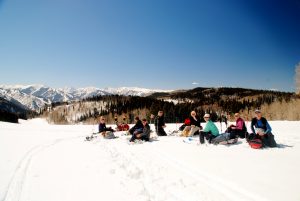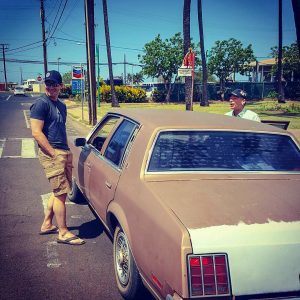 I never considered working in home health when I was a new grad fixated on my career as a sports PT. But, when I started traveling, I quickly noticed there were a lot of home health gigs available. As I began yet another home care assignment a few weeks ago, I realized I was starting my 5th contract working in home care. When did this happen? How did this happen? How have I allowed this to happen!?
I never considered working in home health when I was a new grad fixated on my career as a sports PT. But, when I started traveling, I quickly noticed there were a lot of home health gigs available. As I began yet another home care assignment a few weeks ago, I realized I was starting my 5th contract working in home care. When did this happen? How did this happen? How have I allowed this to happen!?
Turns out, home health is a pretty good shtick for traveling therapists. As I launch into this blog about “home health,” I’ll make a clarification up front: I’m going to use “home health” and “home care” interchangeably – I feel like most people prefer “home health,” I personally prefer “home care.” Whatever, it’s semantics, don’t worry about it.
I think of home care as more of a lifestyle than a job. With the right employer, home care can offer a flexible schedule that is great for people in a variety of stages of life. Flexible schedules typically bring to mind new parents or late-career therapists looking for per diem, but, for me, in 2010 in Hawaii, flexibility meant completing all my patient visits by 3 PM, then surfing for a couple hours before going home to finish paperwork with a cocktail in the evening. The right employer will allow you to control your own schedule – this can be a great way to get more out of the daylight hours in a work week. Paperwork and case management (calling doctors, other clinicians, and patients) do account for significant time during your work day – the good news is that you can do paper work and case management at a coffee shop, outdoors on a sunny afternoon, at home, or where ever you feel like it.
Productivity
The flexibility does not come with every home health job, it is essential to ask about productivity expectations during the interview.
The two major factors that will affect how busy you will be are: a. how many visits you are expected to make weekly and; b. whether more complex visits are weighted to be worth more than one normal follow-up visit.
Basically, without getting into the nitty-gritty jargon of home health, an evaluation visit may be worth more than 1 regular visit (ideally 1.5), but an admission, which can easily take 3 hours of your time, should definitely be worth 1.5 to 2 visits. This is called weighting – where a visit that requires more work counts more on your total productivity. A job with a company that doesn’t weight any visits, is a job worth walking away from.
Number of visits: 5 daily is perfect, 6 is usually fine, 7 is just too many – think about the weighting of eval and admission visits when you think of these numbers (i.e. 7 with heavy weighting may be OK, 6 without any weighting could be a lot of work, 5 with weighting is a great job to have).
The distance and amount of time you’ll be driving plays heavily into the pseudo-equation as well, so ask about your territory during the interview. Also consider looking at a Google Maps of the area you could be working in during rush hour to get an idea of traffic.
Home Health Lifestyle

I did some home health visits inside the famous gingerbread houses of Oaks Bluff (Martha’s Vineyard). Strange sitting in my patients’ living rooms with tourists going by the windows taking pictures of the houses… Fascinating history of how these houses came to be, but try gait training someone on narrow, steep stairs built in the 1800s Victorian version of tiny homes. The challenge and adventure of home care was very apparent.
Enough of the boring logistics of home care. It is full of action. You will go into people’s homes and see how they truly live. Truthfully, you will be completely appalled at how these people live. Hoarders, live chickens in houses, 8 people sleeping in a room with one bed, beautiful mansions, family situations that are wonderful, and family situations that are incredibly ugly – I will NEVER say I’ve seen it all, because in home care, you see stuff you would never ever see anywhere else. It’s a crazy adventure going into people’s houses. It’s also really educational. Home care will forever change your perception of what kinds of living situations hospital patients are being discharged to. It is wild out there… usually in a really fascinating way.
Professional Challenge
Clinically, home care can offer a stimulating challenge. Frequently, you may be the only clinician visiting a patient’s house, and you will have to make important decisions like whether to call 9-1-1 or not. I have called 9-1-1 from patients’ houses a number of times. Typically, it’s a pretty low-drama experience, but you might be the first to come upon a patient whose blood pressure is too low to ignore, or whose blood glucose is too high to wait it out, or who is just too medically complicated to be left at home alone. Home care does make you use a lot of clinical skills and judgments to make decisions that matter, and that’s one of the coolest things about it. It’s worth mentioning, that because of the judgement calls you will have to make, it is worth getting a year or two of experience as a therapist before venturing into home care.
A Setting You Might Consider
So, think about it. Consider home care even if it seems far from what you normally enjoy. It has aspects that will challenge your clinical skills, and it will most definitely change your outlook on how people actually live on a day-to-day basis. Not to mention, there’s a ton of available jobs in home health, and it pays well.
This is 100% true about today: For me, it was a pretty cool day at work. I worked in the mansion of a business man and sat across a very important-looking wooden desk from my patient discussing his mobility and what he wanted out of therapy (business meeting style, he wasn’t coming out from behind that desk unless he had to). I went to a small shed in a backyard to treat another patient, while she is actively in the process of being evicted from the shed… by her mother. In between, I enjoyed some moments outdoors during the work day and even paused for a moment beside the road to soak in a view of the ocean. I took an afternoon bike ride before finishing paperwork, which I wrapped up just before sunset. To summarize my work day, I went into a mansion, positively affected the life of someone near-homeless, and drove around an island …Not a bad way to make a living.
This piece was originally published in the summer of 2015 through thegypsynurse.com






 I have recently heard a lot about “physical therapy’s identity crisis”. That phrase, “identity crisis,” is uttered by those I know personally, by other leaders in the profession, and by PTs across the interweb. Collectively, we have labelled ourselves as having no consensus on what our role in health, wellness, and prevention. There’s in-fighting about the superiority of treatments centering on pain theory, manual therapy, movement science, and other guru-isms that insist, of course, their way is the best way. But, I don’t think we have an identity crisis. We firmly know who we are and what we do – we may have varied methods of treating our clients, but we do have a central, shared focus. I personally believe our percieved identity crisis has everything to do with a large part of our profession not owning their level of expertise, being shy to demonstrate their full expertise to patients and colleagues, and as cliche as it is, not “being the change”.
I have recently heard a lot about “physical therapy’s identity crisis”. That phrase, “identity crisis,” is uttered by those I know personally, by other leaders in the profession, and by PTs across the interweb. Collectively, we have labelled ourselves as having no consensus on what our role in health, wellness, and prevention. There’s in-fighting about the superiority of treatments centering on pain theory, manual therapy, movement science, and other guru-isms that insist, of course, their way is the best way. But, I don’t think we have an identity crisis. We firmly know who we are and what we do – we may have varied methods of treating our clients, but we do have a central, shared focus. I personally believe our percieved identity crisis has everything to do with a large part of our profession not owning their level of expertise, being shy to demonstrate their full expertise to patients and colleagues, and as cliche as it is, not “being the change”. Employer Sponsored Health Insurance
Employer Sponsored Health Insurance







 After a few hours of skiing this morning, I had one heck of a day wheeling-and-dealing a travel contract. I ended up with a couple extra hours and thought I would quickly share the experience.
After a few hours of skiing this morning, I had one heck of a day wheeling-and-dealing a travel contract. I ended up with a couple extra hours and thought I would quickly share the experience.

